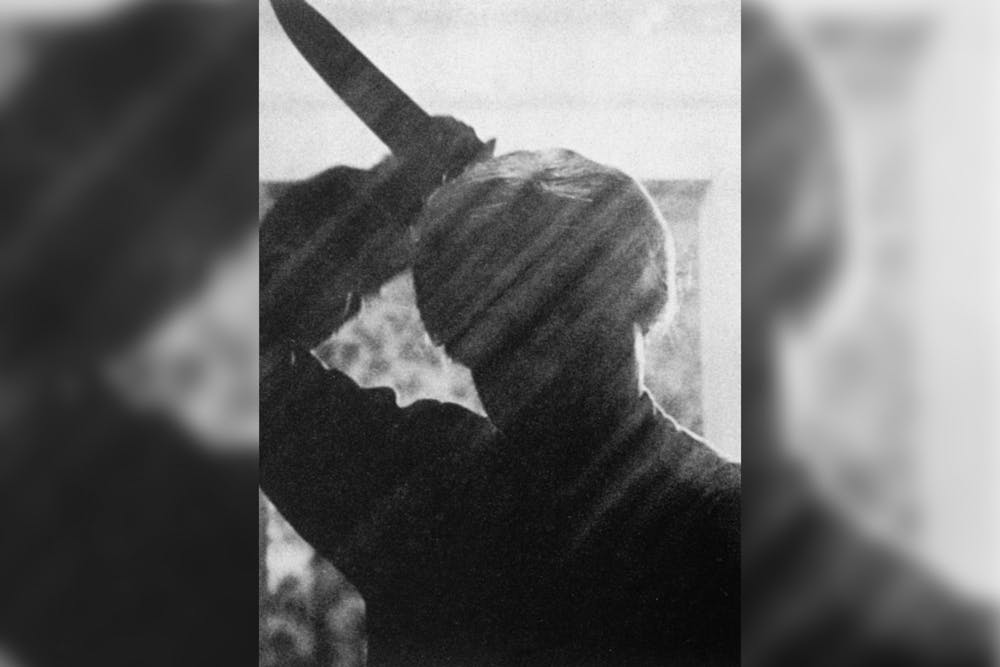It’s Halloween, and if you’re like me, you’ll be celebrating with a good scary movie. We all love a good monster movie, don’t we? Dracula, the mummy, even Michael Myers is kind of a monster. But in our twisted, prejudiced culture, the most horrifying monster, according to mainstream horror films, is a trans person.
Not all trans characters need to be morally perfect, but it’s far past time that filmmakers be more thoughtful in their depictions of trans characters. Negative depictions of trans people constitute most of their representation in film. More positive representations of transgender characters are desperately needed.
The trans representation we have in horror films ranges from lackluster to downright problematic. An example is warranted.
It’s 1960. Janet Leigh graces the screen for her famous scene. She’s alone, in the shower, having a pleasant, private moment. Behind her the door opens. She doesn’t hear over the running water. Suddenly, the shower curtains are pulled back. Cue the sharp, screeching sounds of violins, and the close-up of the screaming woman right before she is brutally murdered.
It’s revealed at the end of Alfred Hitchcock’s “Psycho” that the knife-wielding murderer is Norman Bates, dressed up in his mother’s clothes because he believes that he is his mother. However, Norman Bates is decidedly not a trans person.
But a woman is killed in a bathroom, of all places, by a man dressed as a woman. Don’t the most devout transphobes wrongly say that’s all a trans woman is anyway?
“Psycho” became the template for a new horror movie trope. Suddenly, it became quite fashionable to feature trans or trans-coded psychopaths in horror. Films such as 1980’s “Dressed to Kill” and 1991’s “The Silence of the Lambs” make Hitchcock’s film look tame.
Characters like Norman Bates in “Psycho” and Buffalo Bill in “The Silence of the Lambs” affect how trans people are perceived in reality. In the Netflix documentary film “Disclosure,” actress Jen Richards recounts how when she came out to her friend as transgender, their immediate response was, “What, like Buffalo Bill?”
Buffalo Bill is a serial killer who murders women, skins them and then wears their skin because, as Hannibal Lecter puts it, Buffalo Bill is not a trans woman, but he thinks he is.
The filmmakers may have known they could be doing tremendous harm to the trans community with Buffalo Bill, and despite a character explicitly saying Buffalo Bill is not transgender, the audience is generally incapable of understanding such nuance.
When the most popular depictions of transgender characters are terrifying murderers, it is unsurprising trans people in real life are viewed with fear and suspicion.
Take “Psycho” and its far inferior imitator “Dressed to Kill,” in which transgender and transgender-coded characters murder women in the bathroom. Fast-forward to 2020, and author J.K. Rowling destroys her legacy in one fell swoop by writing in “TERF Wars” about the dangers of throwing open the doors of bathrooms “to any man who believes or feels he is a woman.”
While representation isn’t everything, it cannot be denied these depictions of trans people have real-life ramifications. In January of this year, for example, the Indiana House of Representatives introduced a bill that would make using a bathroom designated to the opposite gender of one’s birth a misdemeanor.
It’s imperative that we tirelessly fight against anti-trans legislation. Trans people are not the monsters you’ve seen in film. They are human beings who deserve dignity, and better portrayals in media would go a long way to change people’s perceptions of trans people.
It’s worth mentioning that it is almost always a trans woman, played by a cisgender man, depicted as the villain in horror. Transgender men are effectively erased, and transgender actors have been excluded from representing themselves throughout most of the history of film.
What makes the conversation around trans characters in horror so difficult is that movies like “Psycho” and “The Silence of the Lambs” are admittedly very good films. But enough is enough. We have seen trans characters play the villain — it is time we see them be the hero. Monsters no more, trans people will be the ones we cheer for, surviving the masked slasher and slaying the monster.
Jared Quigg (he/him) is a sophomore studying journalism and political science.






